6 Mistakes in Container House Maintenance: Prevention and Care Strategies
Container homes have gained popularity as an eco-friendly and cost-effective housing alternative. With their modular design and industrial aesthetic, shipping container homes offer a unique living space. However, maintaining such homes comes with a unique set of challenges that, if not properly addressed, can lead to significant issues. Understanding these potential pitfalls is crucial for any container homeowner or aspiring builder who wants to ensure the longevity and comfort of their dwelling.
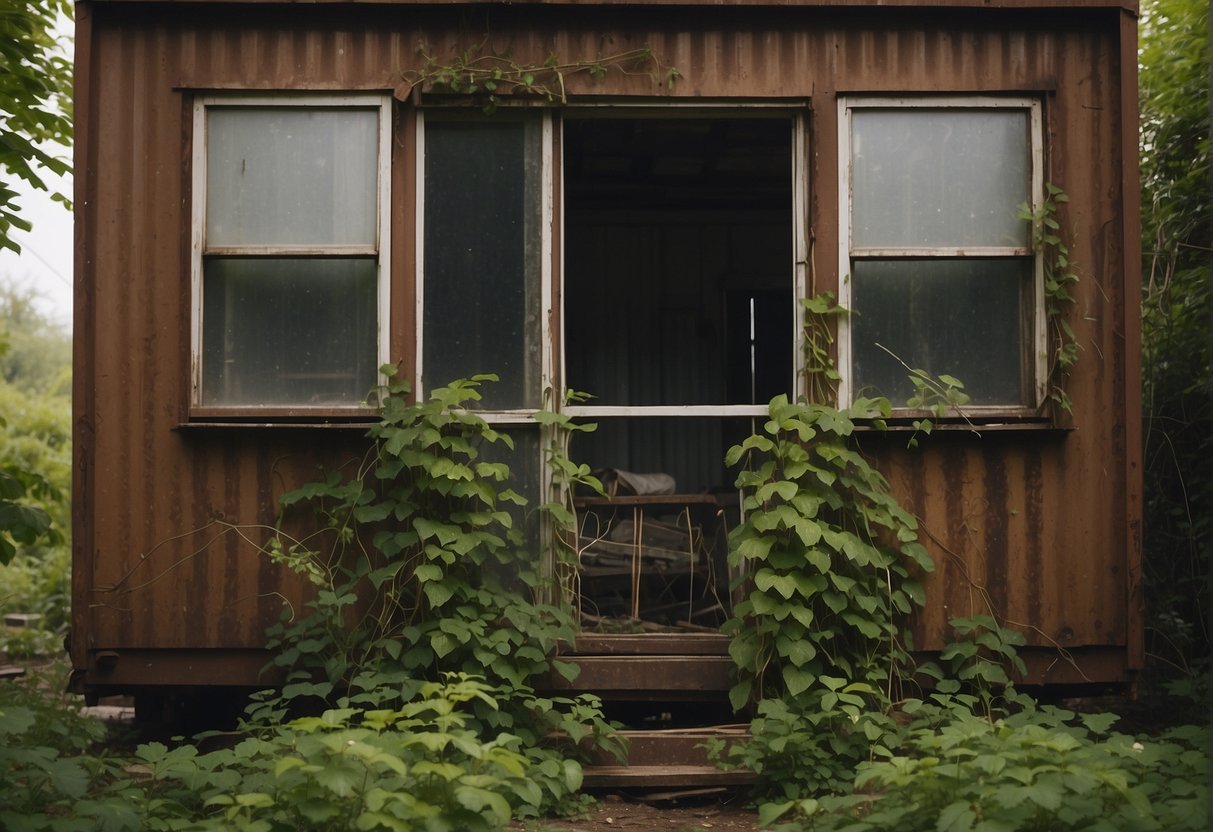
Addressing common maintenance challenges in container homes can be a proactive way to enhance livability. From the importance of a strong foundation to the nuances of insulation and temperature control, each aspect of a container house requires careful consideration. Proper maintenance not only ensures the structural integrity of the home but also contributes to its overall energy efficiency and comfort. By being aware of these maintenance mistakes, homeowners can avoid common problems and preserve the value of their container homes over time.
1. Selecting the Right Type of Container
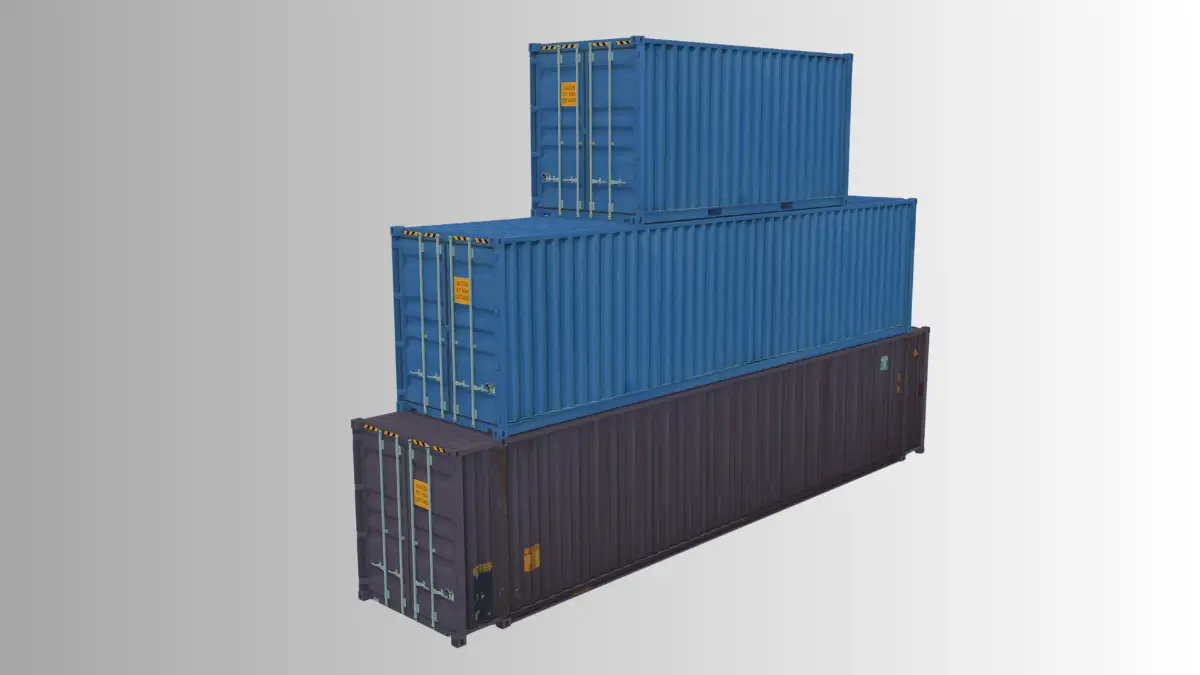
The cornerstone of successful container house maintenance begins with choosing the right shipping container. Making an informed decision will affect the longevity and sustainability of a container home.
Understanding Container Specifications
Shipping containers vary in terms of dimensions, types, and the conditions they’ve endured. New containers offer the advantage of being in pristine condition but come at a higher cost. High cube containers, on the other hand, provide additional vertical space, beneficial for those needing extra headroom or loft spaces. It’s imperative to understand the specific specifications that suit your project’s needs before committing to a purchase.
- New Container: Typically more expensive, no history of wear.
- Used Container: Cost-effective, but require thorough inspection.
Avoiding Common Size and Type Mistakes
Selecting the wrong size or type of container, such as a wrong size shipping container or a wrong type of container, can seriously impede future maintenance and functionality of a container home. Standard containers are typically 8 feet wide and come in lengths of 20 or 40 feet, with high cube containers being 9 feet 6 inches in height. Verify local planning regulations to ensure that your chosen container fits within legal limits and can accommodate your desired home design.
- Standard Containers: 8 feet wide, 20 or 40 feet in length.
- High Cube Containers: Additional foot in height at 9 feet 6 inches.
In short, it’s crucial to match the container’s specifications with your specific project requirements to avoid costly mistakes down the line.
2. Planning and Permits
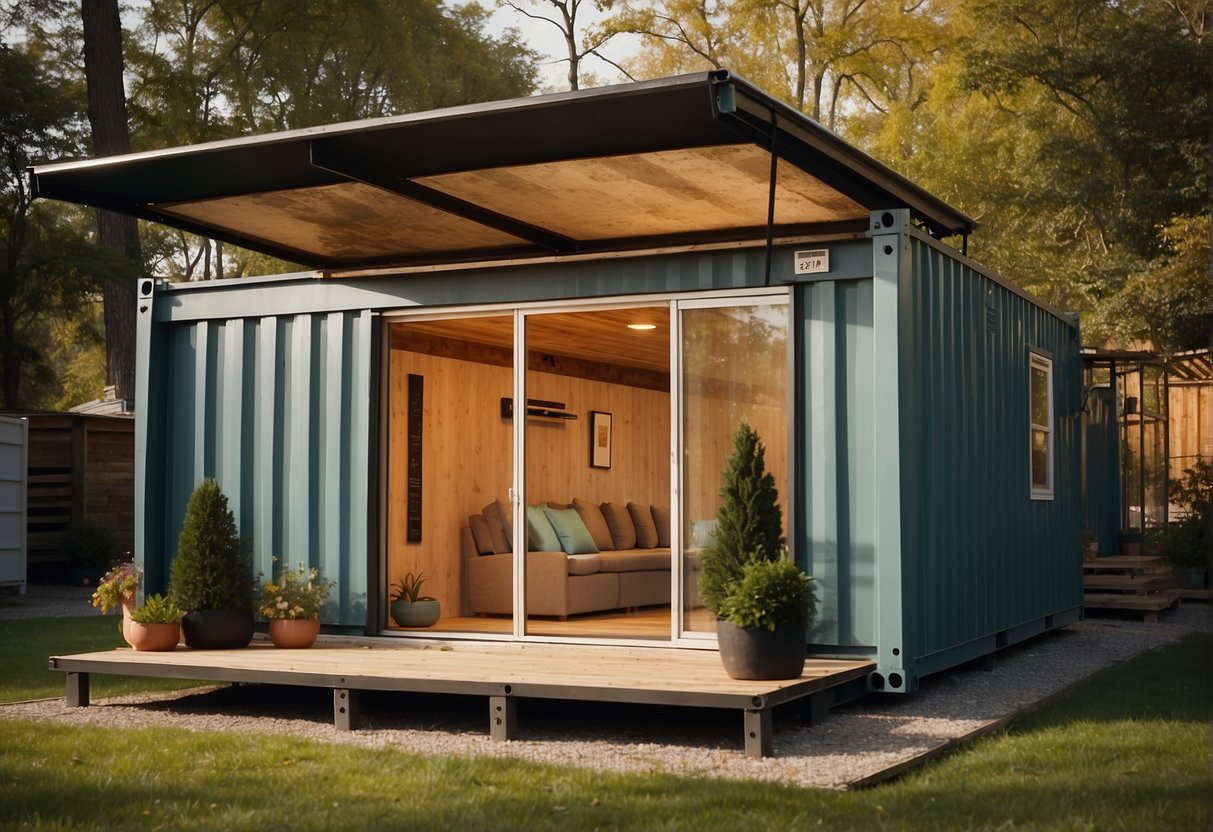
In constructing container homes, careful attention to planning and obtaining the right permits is crucial for legality and safety. The process involves a thorough understanding of local regulations and securing all necessary permissions.
Navigating Zoning and Building Codes
Zoning regulations determine if a container home can be built on a given parcel of land. Local planning regulations typically have specific requirements including size, location, and utility connections that must be met. The International Residential Code (IRC) serves as a benchmark for building standards, but local building codes may have additional stipulations. Prospective builders should consult with local authorities to ensure compliance and avoid legal complications.
Securing Necessary Permissions
The path to legally erecting a container home requires obtaining the necessary permits. This typically involves submitting detailed plans and specifications to local departments for approval. A contractor with experience in container construction can be invaluable in navigating this process, streamlining permit acquisition. Local building codes dictate specific criteria that must be met and can vary widely, so it is imperative to engage with local officials early in the planning stage. Compliance with zoning codes and regulations is not just about legalities; it ensures the home is safe and suitable for living.
3. Laying the Foundation
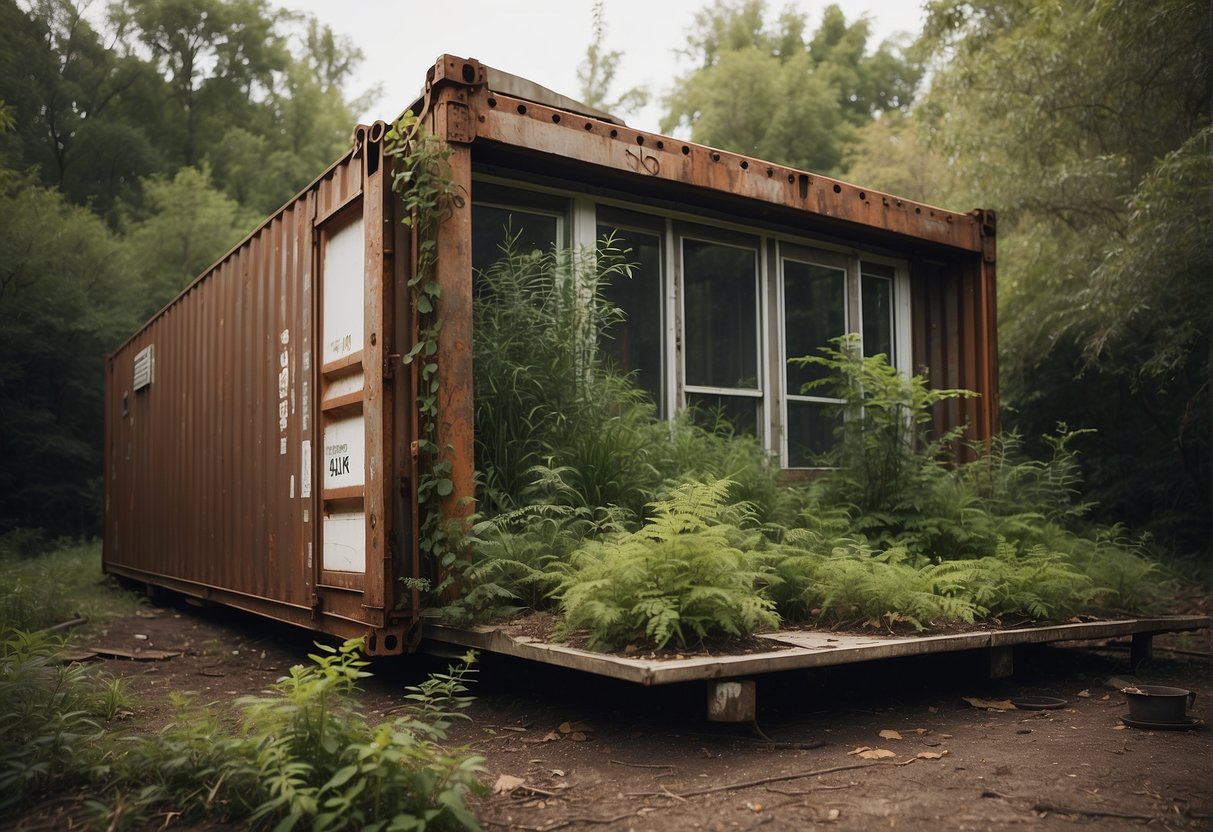
A strong foundation is critical for the longevity of a container home. It ensures that the structure does not sink or shift due to ground conditions. Choosing the proper foundation secures the home’s structural integrity and conforms to local building regulations.
Choosing the Right Location
Selecting an ideal location for a shipping container home entails evaluating the soil and land characteristics. One must consider the load-bearing capacity of the soil to avoid settlement and ensure the land is level to provide uniform support. It is prudent to conduct a soil test to determine the type and depth of the foundation required. Compliance with zoning laws and building codes is also essential when deciding on the location.
Assuring Structural Integrity
To maintain structural integrity, one must consider the type of foundation suitable for their container home. A slab on grade or strip trench foundation is typically reliable for permanent structures, while piers can be used for temporary setups. Professional input is crucial in determining the appropriate foundation that can handle the weight of the container and resist environmental stresses. Ensuring that the building adheres to the area’s construction regulations and codes is imperative to avoid future legal and safety issues.
4. Insulation and Climate Control
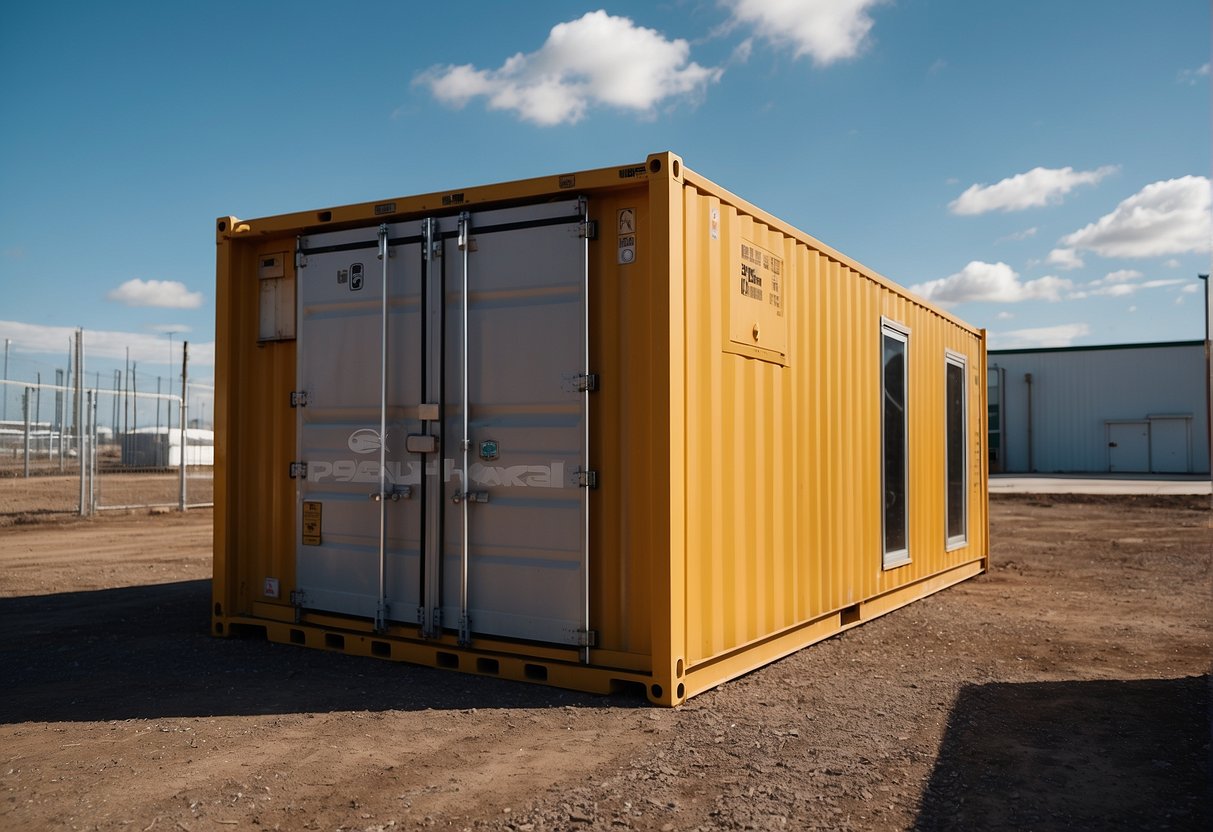
Choosing the correct insulation and managing climate control are critical for the comfort and energy efficiency of container homes. They must address specific challenges such as extreme temperatures and moisture control.
Selecting Suitable Insulation Methods
The choice of insulation is pivotal in maintaining a comfortable temperature. Spray foam insulation is recommended for its ability to create an airtight seal and serve as a moisture barrier. In contrast, blanket insulation—commonly made from fiberglass or rock wool—is simpler to install and may be a cost-effective option. However, insulation panels offer a balance between ease of installation and effectiveness. For those concerned about environmental impact, recycled newspaper insulation can be considered a sustainable choice. Each insulation type must match the climate: in colder regions thicker, higher-R-value materials are essential, whereas in temperate climates, lighter insulation might suffice.
Handling Condensation and Ventilation
Condensation can threaten the structural integrity of a container home and promote mold growth. Proper insulation, especially closed-cell spray foam, serves as a vapor barrier, mitigating the risk of condensation. Additionally, strategic ventilation is necessary to manage air moisture levels. Pairing adequate ventilation with the correct type of insulation is crucial; using the wrong type of insulation may trap moisture, causing more harm than good. Choosing the proper ventilation system, such as passive vents or HVAC units with humidity control, will ensure that a container home remains dry and durable.
Remember, matching the insulation type with climate and ventilation needs will prolong the lifespan of a container home and enhance living comfort.
5. Maintenance and Repairs
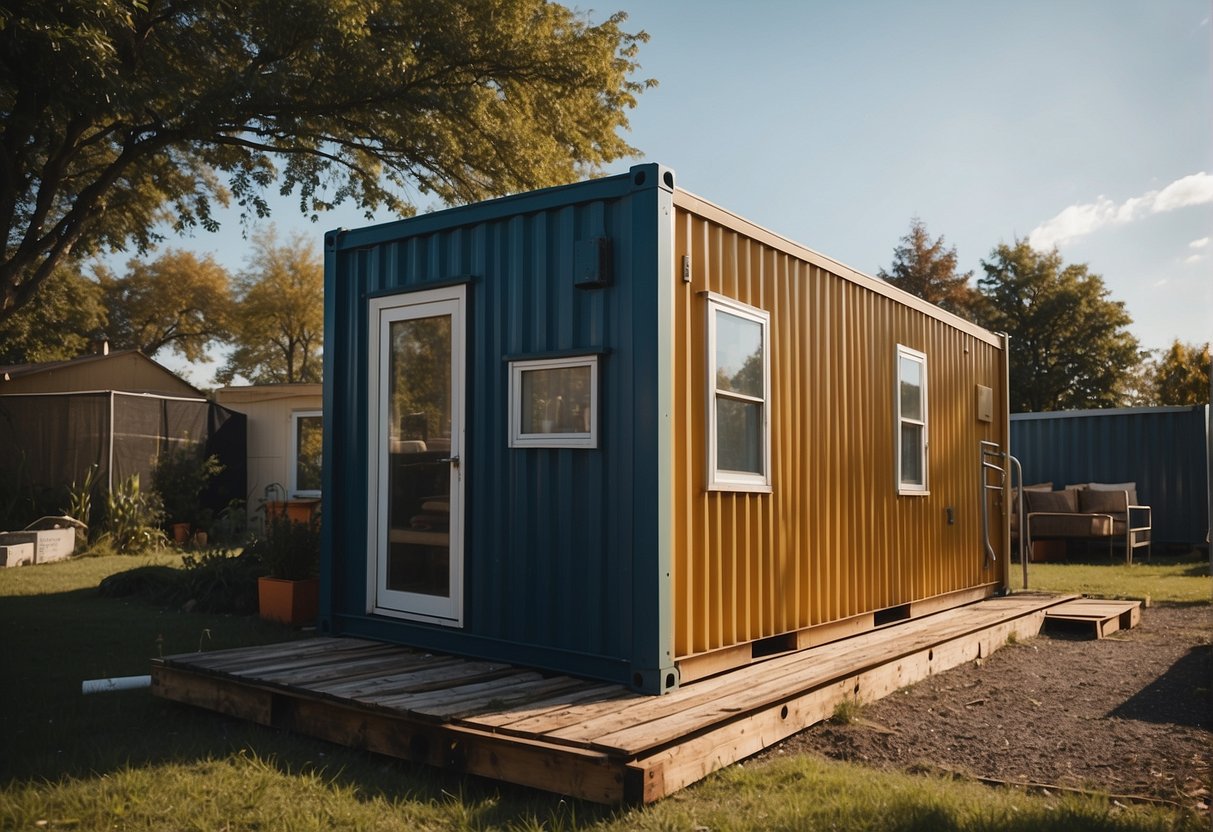
Container house maintenance is not only about keeping the structure looking good; it’s imperative for preserving the integrity and safety of the home. It involves a rigorous approach to regular checks and addressing issues promptly to avoid costly repairs in the future.
Regular Inspection and Maintenance
They should conduct regular inspections to detect any problems early on. These inspections can reveal issues like surface rust or signs of wear and tear that, if left unattended, can lead to more significant damage. For example, the steel walls and corners of a container home are prone to corrosion and should be routinely checked for rust, especially if located in a humid or coastal environment. Here is a brief checklist for standard maintenance practices:
- Steel Walls and Corners: Look for rust, dents, and degradation.
- Joints and Seals: Ensure they are intact to prevent leaks.
- Roof: Check for accumulations of water or debris.
- Paint: Monitor for any chipping or peeling.
Performing regular cleaning and applying protective coatings is vital for maintenance. If issues are discovered during inspection, address them immediately. For small areas, surface rust and stains can be addressed by grinding and spot painting. Maintenance also includes ensuring the roof is clear of debris and doesn’t hold water, which can lead to corrosion especially in areas where the paint may have worn thin.
Addressing Structural and Sealing Issues
Structural integrity is paramount when maintaining a container house. They should inspect all welds, the condition of the container’s frame, and especially the corners and joints, where structural issues may be most prevalent. Where necessary, structural reinforcement or patch repairs might be required.
As for sealing, the container must be watertight to protect the interior from moisture intrusion. They should apply sealant regularly to joints and edges where the original seal may have degraded. If sealing issues are not promptly addressed, water ingress can lead to mold, rot, and further structural decay, so it’s crucial to keep the container dry and watertight.
In both cases, the sooner they address these issues, the better it is in terms of reducing further deterioration and extending the container house’s lifespan. Regular maintenance and prompt repairs are key to a long-lasting and safe container home.
6. Modifications and Customization
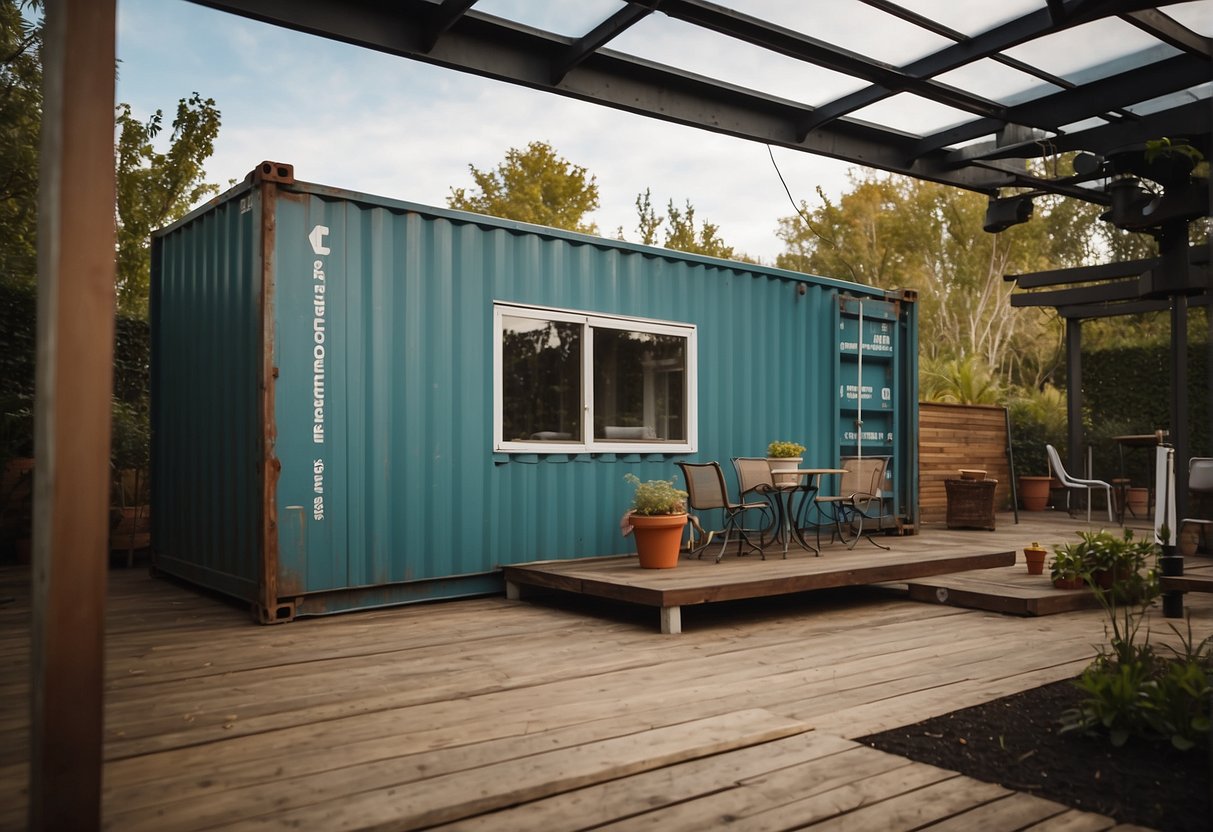
When it comes to maintaining a container house, modifications and customization are areas where homeowners can inadvertently introduce issues. The importance of understanding the integral structure of shipping containers should not be understated, especially when undertaking modifications that can affect their strength and durability.
Undertaking Safe Structural Modifications
One must approach structural modifications with caution. Cutting too much steel out of containers can compromise their integrity. Recommendations include consulting with structural engineers before removing any parts of the container’s frame. Window and door cut-outs should be reinforced to prevent the structure from sagging or warping over time. It is crucial to maintain the robustness of the original design while incorporating the desired customizations.
Integrating Functional Systems
Integrating systems such as plumbing requires thoughtful planning and effort to ensure they are both eco-friendly and reliable. The process should be compliant with local building codes, often a cause of oversights. While installing plumbing:
- Ensure that pipes are correctly insulated to prevent burst pipes in cold climates.
- Opt for water-saving fixtures to support sustainable living.
- Consider the placement of pipes to maintain accessibility for future maintenance.
In regards to electrical and HVAC systems, employing professionals can help ensure that the designs are up to code and do not interfere with the structure’s integrity. Properly planned systems can enhance the living experience in a container home without detracting from its eco-friendly appeal.
Financial Planning
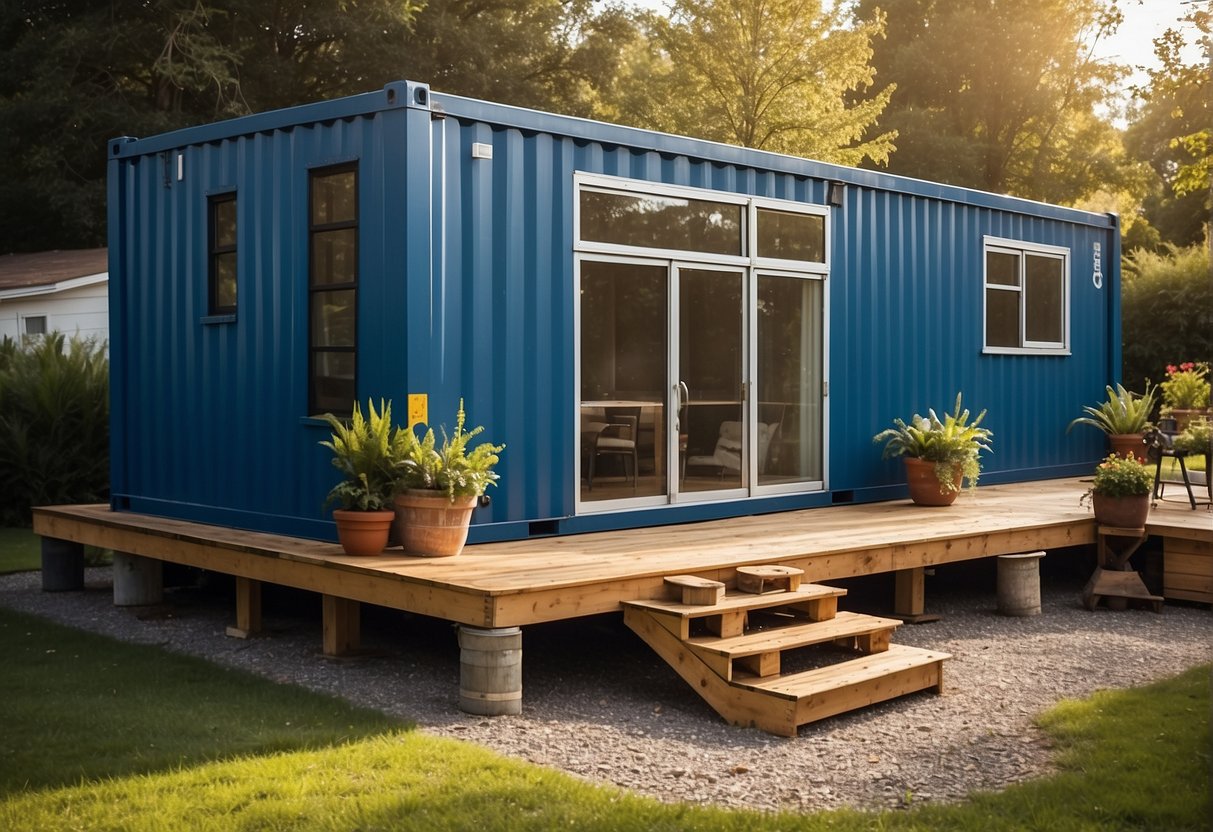
Proper financial planning is critical in maintaining a container house. It optimizes costs while ensuring the structure remains sustainable and adheres to affordable housing principles.
Estimating Total Costs
Before committing to a container house project, one must assess all associated costs, including the price of the material, land preparation, and construction. On a square foot basis, these expenses can vary greatly. It’s essential to factor in the long-term maintenance costs to have a comprehensive financial overview.
- Initial Purchase: The cost of acquiring containers.
- Land Preparation: Clearing, excavation, and foundation work.
- Construction: Framing, insulation, utilities installation.
- Finishing Costs: Interior and exterior finishes, fixtures.
- Maintenance: Regular upkeep and potential repairs.
- Utilities: Ongoing costs for electricity, water, and waste.
Achieving Cost-Effective Solutions
The pursuit of cost-effective solutions should not compromise quality. One can opt for affordable housing by choosing materials that provide adequate insulation and durability, lowering the long-term environmental impact and cost.
- Insulation: High-quality insulation can save energy costs.
- Solar Panels: They provide renewable energy, reducing utility bills.
- Green Roofing: This can improve insulation and reduce runoff.
- Multi-purpose Furniture: Saves space and material cost.
- Upcycling: Reusing materials can be both eco-friendly and economical.
By taking these specific components into account, individuals can maintain their container homes in a way that is financially sound and environmentally considerate.
Common Mistakes to Avoid
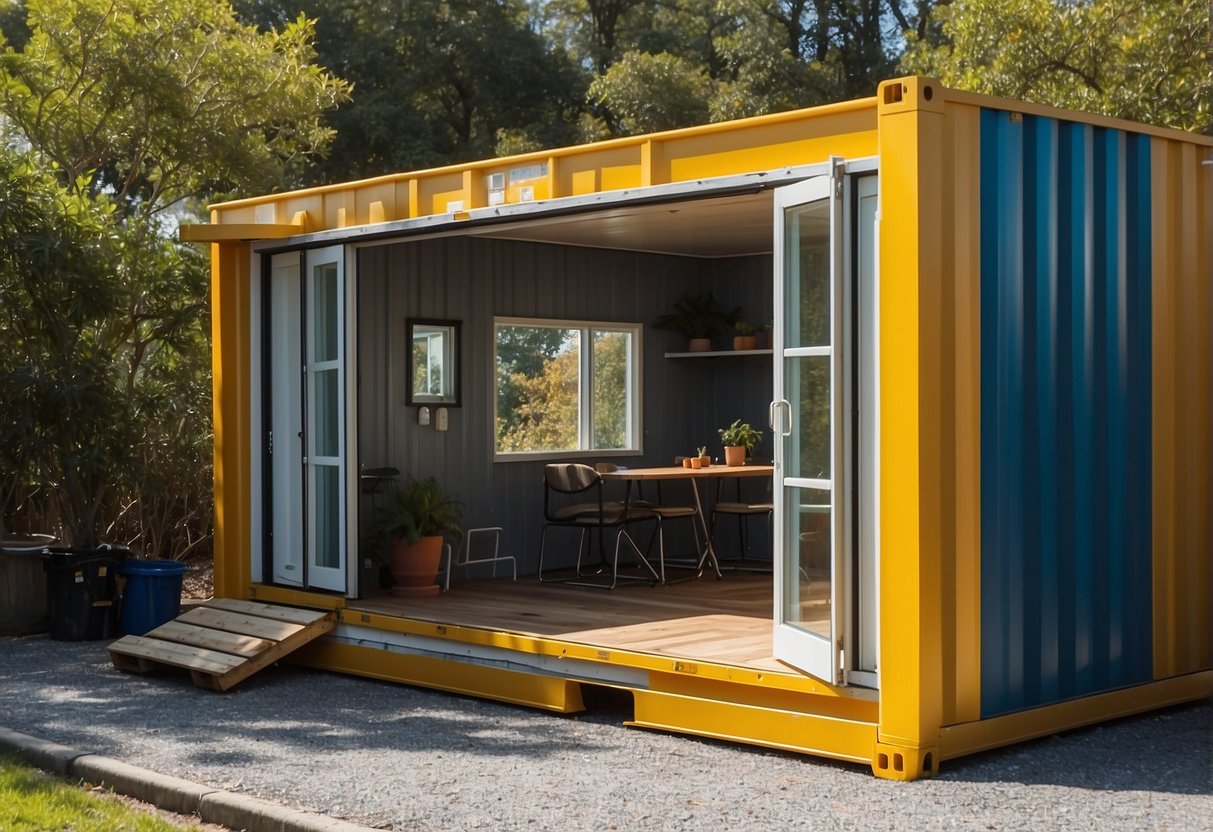
In the pursuit of sustainable living, it’s crucial to recognize common pitfalls in container house maintenance and address them proactively. This segment identifies frequent oversights and provides guidance on how to sidestep them, ensuring your container home remains a bastion of sustainability and resilience.
Doing Due Diligence
When it comes to maintaining a container home, due diligence cannot be overstated. A significant mistake to avoid is neglecting a thorough inspection of the container prior to purchase and conversion. Containers should be checked for structural integrity and signs of corrosion. Ensuring a proper vapor barrier is installed can prevent moisture issues that are costly to rectify later.
Ensuring Energy Efficiency
Energy efficiency is paramount in container home maintenance. Ineffective insulation is a common oversight which leads to increased heating and cooling expenses. Homeowners must choose the right insulation materials and techniques to manage temperature swings effectively. Apart from insulation, the strategic use of energy-efficient windows and doors plays a crucial role in maintaining an optimal internal environment.
Preparing for Natural Disasters
Container homes, while durable, are not impervious to the forces of nature. Owners must avoid the mistake of underestimating the impact of natural disasters. To avoid such a scenario, homes should be designed to withstand local weather conditions, whether it be reinforcing the structure to resist high winds or elevating the foundation in flood-prone areas. Regular maintenance checks for wear and tear are essential in ensuring the container home’s durability and safety.
Conclusion
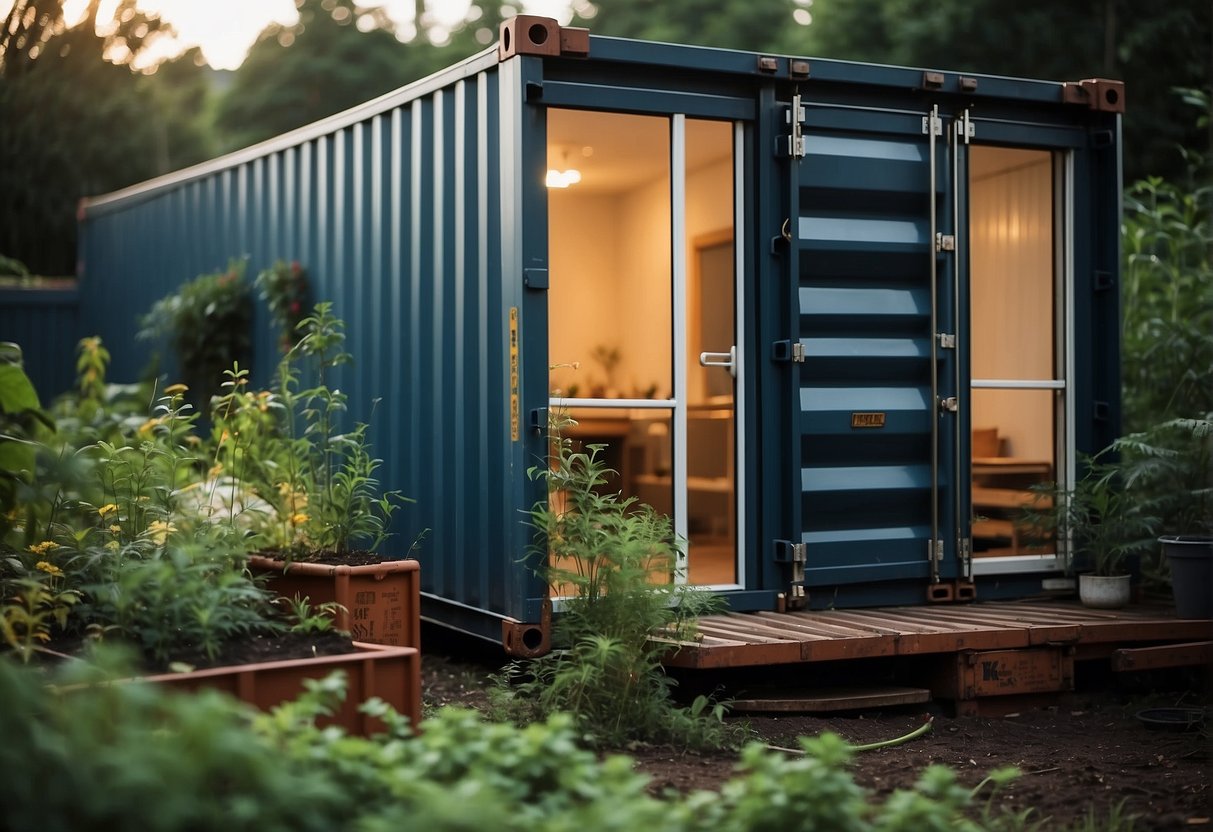
Maintaining a container home effectively is key to enjoying its benefits over traditional homes, such as affordability and unique design models. Here is a succinct summary to guide homeowners:
- Regular Inspections: They should schedule consistent checks to identify issues like rust or insulation failure early.
- Proper Insulation: Homeowners can avoid high energy bills and condensation problems by selecting the right insulation for their climate and container home model.
- Compliance with Codes: Adherence to local building codes is essential. Securing the right permits ensures that the container home meets safety standards.
- Considerate Modifications: When altering containers, one should be cautious not to compromise structural integrity. Strategic cutting is paramount.
- Appropriate Foundations: A stable foundation prevents future structural problems, making it a critical investment.
- Seasonal Preparedness: Owners should prepare their homes for changing seasons with suitable maintenance routines, which differ from traditional houses.
In essence, a container home owner reaps the rewards of affordability and efficient space usage with diligent upkeep. Proper maintenance ensures that these innovative homes remain both cost-effective and structurally sound for years to come.
